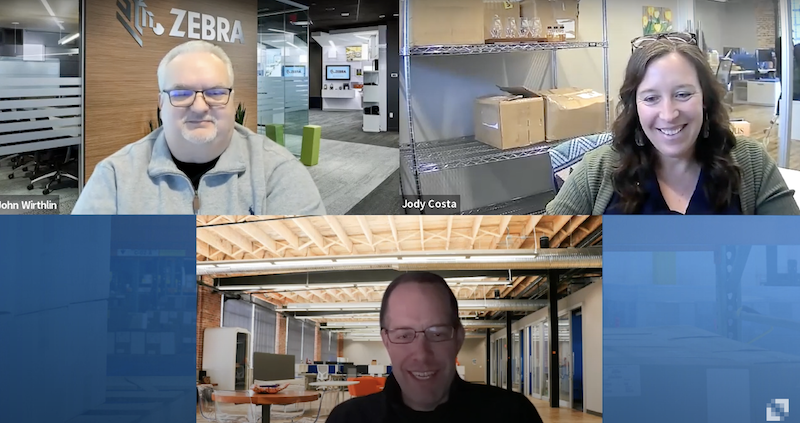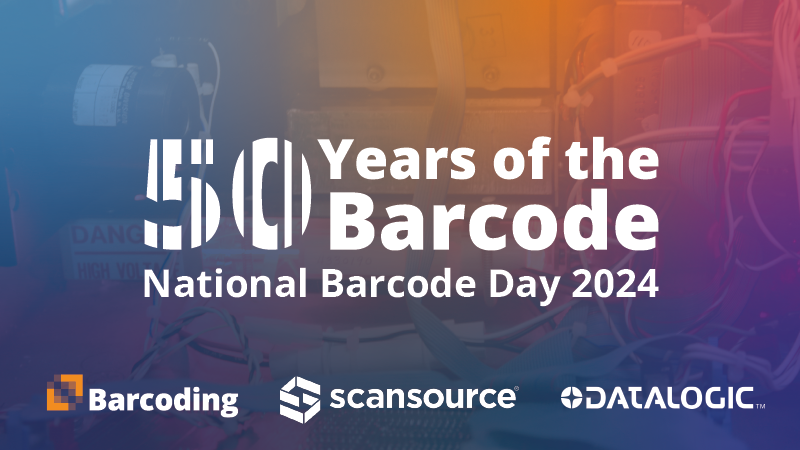Deadlines affect different people in different ways. You might be proactive or you might be a procrastinator, but our March Huddle guests recommend acting now to start moving toward compliance with Section 204 of the FDA’s Food Safety Modernization Act, or FSMA 204.
Maybe you’re thinking, “Hey, the final version was published in November 2022 with a compliance date of 2026…so what’s the rush?”
As you develop and implement a food traceability plan that complies with FSMA 204, delivers operational benefits to bolster ROI, and that works smoothly with trading partners, the last thing you’ll want to do is rush.
Starting early with expert partners like Barcoding and Zebra Technologies can help you get a comprehensive understanding of your unique traceability needs, from GS1 supply chain standards to technologies like RAIN RFID (radio frequency identification) and IoT-connected equipment and solutions.
For our March Huddle, I invited two of the proudest supply chain geeks I know to talk tech-enabled traceability, one of the FDA’s four pillars of its New Era of Smarter Food Safety Blueprint:
- John Wirthlin, Industry Principal at Zebra Technologies
- JW Franz, Director of IoT Automation Solutions, Barcoding
Dive right into the conversation to geek out on food traceability, tech solutions, data sharing and standards, and so much more!
What is FSMA 204 and Why Does it Matter Now?
FSMA 204 is all about keeping people safe, and it matters because—as John succinctly put it—everybody eats. FSMA 204 is focused on optimizing food traceability from where it’s produced, through the supply chain, to where food products are purchased or consumed—whether that’s at a grocery store or in a restaurant.
Comprehensive traceability of products on the FDA’s Food Traceability List is essential for every supply chain stakeholder, including:
And while safety and health are the core concerns, it’s easy to understand how health and safety ripple out to impact operational efficiency, customer and employee experience, and brand reputation, as each supply chain stakeholder interacts with the product (and/or the data about its movements).
In the case of a food recall, it’s crucial for businesses to be able to immediately discern whether any inventory is affected, and get it out of the food supply without delay. That’s what traceability lot codes are all about—and the right combination of technologies and workflows can make it a lot easier to make sure the food in the supply chain is safe.
Regulatory Compliance is Just the Start
The benefits of regulatory compliance are self-evident: avoiding penalties and lost customers, for starters. But in a fiercely competitive environment for quick-serve restaurants (QSRs), food retailers, and other sellers of food products, product traceability can help build trust and differentiate a brand from competitors.
While FSMA 204 doesn’t specify a required technology for tracing and tracking food products in the supply chain, RAIN RFID is a proven technology. Many product manufacturers and suppliers have been using RFID tags for inventory management and supply chain visibility for years.
RAIN’s benefits extend beyond meeting the mandate and into operational improvements such as:
- Reducing time and labor needed for shipment receipt and verification
- Eliminating tedious and menial tasks through process automations
- Tracking reusable totes, pallets, and other RTIs
- More effectively managing inventory for freshness, first-expiry-first-out, etc.
- Preventing and reducing food waste
But no two businesses are the same, and selecting the right technologies, tools, and solutions is not a one-size-fits-all question.
The Benefits of Being Supply Chain Geeks (and Building Strong Partner Ecosystems)
Every business has its own set of challenges on the path to compliance, and its own set of operational opportunities for maximizing ROI on compliance investments. A lot depends on organizational complexity, maturity, current technology use, supply chain partners, and much more. The key is identifying those opportunities, and building the plan to achieve them.
An expert integrator like Barcoding with close technology partner relationships—as we have with Zebra—adds even more depth and breadth to your traceability plan team. Their experience and expertise in technologies, interoperability standards, and complex environments can help you follow proven processes and ensure successful implementation.
When you’re willing to collaborate closely with partners and allow them to look under the hood at your organizational processes, they can understand your environment to help you choose the best solutions and keep you on track toward your future-state goals. Together, expect to:
- Identify current workflows
- Understand future workflow needs
- Identify tools and technology to achieve your desired future state
- Collaboratively select the right solutions
- Implement, integrate, and optimize for results beyond food traceability compliance
- Ensure interoperability to share benefits with upstream and downstream trading partners
One key to getting there is collaborating closely with partners like Barcoding and Zebra, and opening up to share how your organization works, so they can really understand your environment, choose the best solutions and keep you aligned with your future-state goals.
RELATED: How GS1 Standards & Data Capture Help QSRs and Grocers Meet FSMA 204 Rules
Establishing a FSMA 204-Ready Culture
John stressed the importance of inviting your technology partners and your enterprise stakeholders—the ones “who wake up screaming in the middle of the night” about compliance deadlines and complexity—to a shared conversation. Welcome your trusted experts to apply their understanding of complexity to your environment, including regulatory compliance, quality assurance, legal and risk management, and your upstream and downstream supply chain partners.
They can help you identify resource gaps and even help make the business case to leadership about strategic investments in people, technologies, tools, etc., and how to realize as many operational benefits as possible from those investments.
In an industry as complex, interconnected, and crucial to human survival as food, we’re just beginning to tap into the benefits of increased efficiency, accuracy, and connected data. It’s a great moment to dream big, but it’s also the right moment for action. Learn more about the many ways RAIN RFID and IoT-connected technologies are changing the supply chain for the better. Download your copy of our free guide here or by clicking below.







